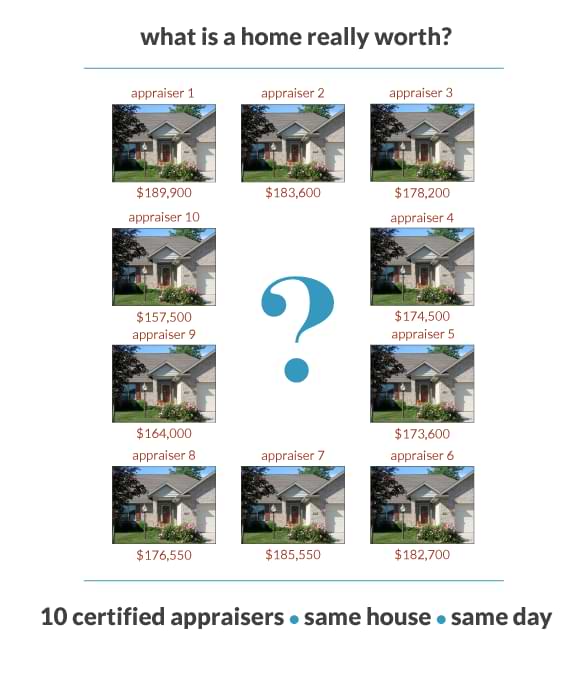
Same House Same Day Different Value?
One of the most perplexing aspects of real estate transactions is when two appraisers provide differing valuations for the same property. As a seasoned real estate appraiser, I’ve encountered this situation often, and it’s important to understand the underlying factors that contribute to these discrepancies.
Timing Matters (Effective Date of The Appraisal)
First and foremost, the timing of each appraisal is crucial. In fast-paced markets, an appraisal can become outdated within a few months. If one appraisal is several months or even years old, it may not accurately reflect current market conditions. Always check the effective date of the appraisal, as it can differ from the inspection date. For instance, in estate appraisals, the effective date may correspond to the date of the property owner’s passing, which can create significant time gaps.
Purpose and Definition of Value
Another critical factor is the intended use and definition of value. Appraisers must clearly define these parameters in their scope of work. If an appraisal is conducted for insurance purposes, it may focus on replacement costs rather than market value, rendering it unsuitable for establishing a sale price. Other common types of value include:
Value in Use: Based on the current use of the property.
Retrospective Value: Reflects value at a specific point in the past.
Liquidation Value: What the property would sell for in a forced sale.
Each of these differs significantly from the current market value that buyers and sellers are most interested in.
Highest and Best Use Analysis
The concept of “highest and best use” is fundamental in appraisal. This involves determining the most profitable use of a property that is physically possible, legally permissible, and financially feasible. For example, if an appraiser believes a mobile home park should be subdivided into residential lots, but the buyer sees greater profit in retaining it as a rental operation, this difference in perspective can lead to varying valuations.
Reconciling Differences
When appraisals come in at different values, particularly when they are both recent and under the same conditions, it raises questions about the appraisal process itself. Lenders might seek a reconsideration of value if they suspect errors or biases in an appraisal. This has become increasingly relevant following new regulatory guidelines aimed at reducing discrimination in appraisal practices.
Consider a scenario where a property is under contract for $550,000. The first appraisal comes in at $500,000, while a subsequent appraisal for the same property reflects a value of $560,000. This could arise from several factors:
Comparable Selection: Each appraiser may have chosen different comparable properties. Fannie Mae guidelines dictate that comparables should share similar physical and legal characteristics with the subject property. Were any relevant comparables overlooked? Did either appraiser dismiss certain sales due to valid concerns about their reliability?
Adjustment Methods: Appraisers adjust comparable properties to reflect differences with the subject property. Are these adjustments justifiable? For instance, if an appraiser adjusts a comparable downwards due to a bathroom discrepancy, this should be based on market reactions.
Consistency in Adjustments: If one appraiser uses a different per-acre adjustment for similar properties, there should be clear reasoning behind the inconsistency. A well-explained rationale strengthens the credibility of an appraisal.
Reconciliation of Data: The appraiser must ensure that their final reconciled value falls within the adjusted range of the comparable sales. The reasoning behind this final value should be transparent and supported by market data.
Conclusion
In summary, while discrepancies in appraisals can be frustrating, they are often the result of complex factors such as timing, purpose, and methodologies used by appraisers. Understanding these nuances can help consumers, agents, and lenders navigate the appraisal process more effectively. Next time you encounter two differing appraisals, dig deeper into the details; the answers are often found within the reports themselves.
Whether you’re a real estate agent, seller, or buyer, our expert appraisers are here to assist you in making informed decisions. Contact us today to learn how we can support your real estate needs.

